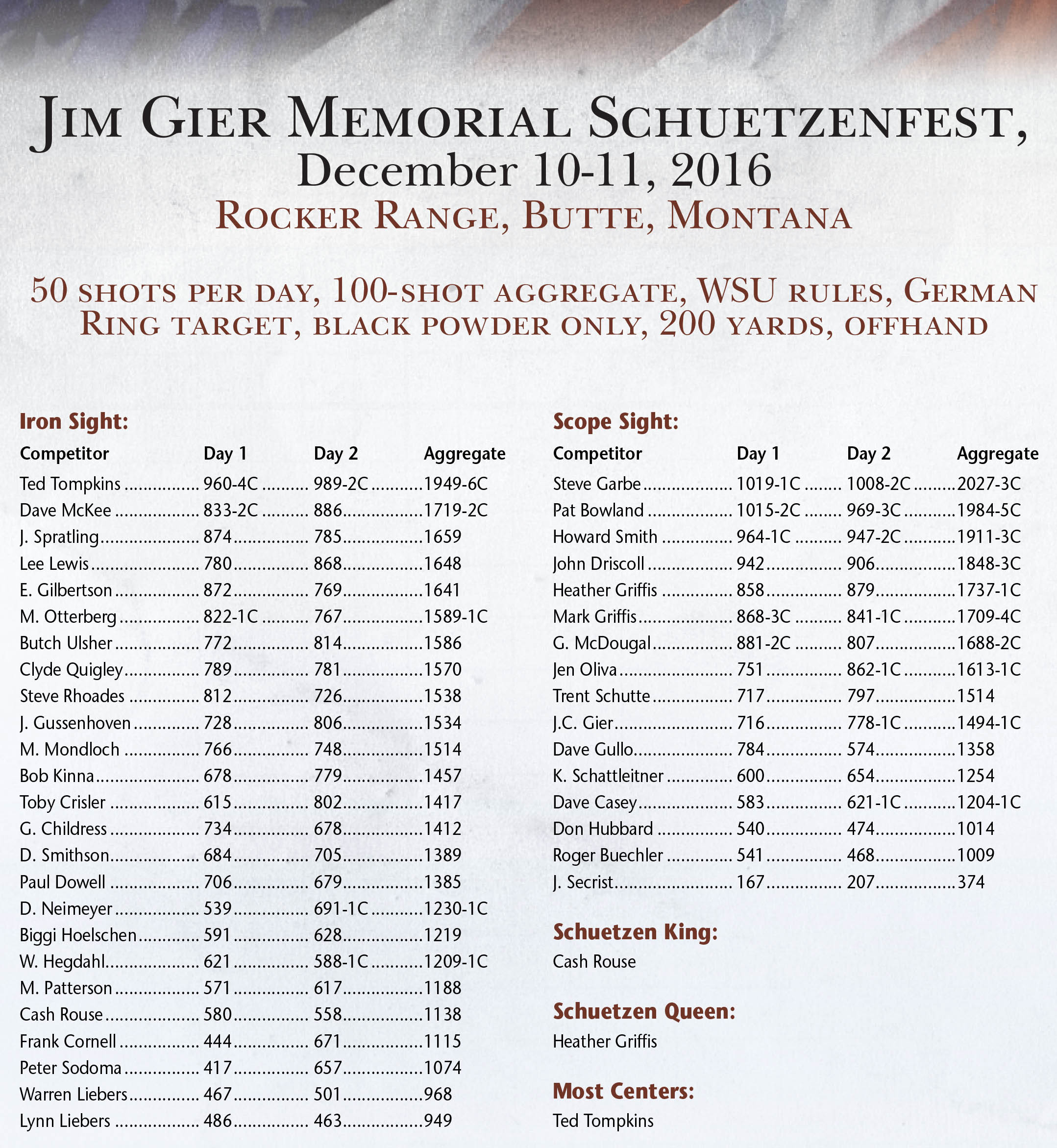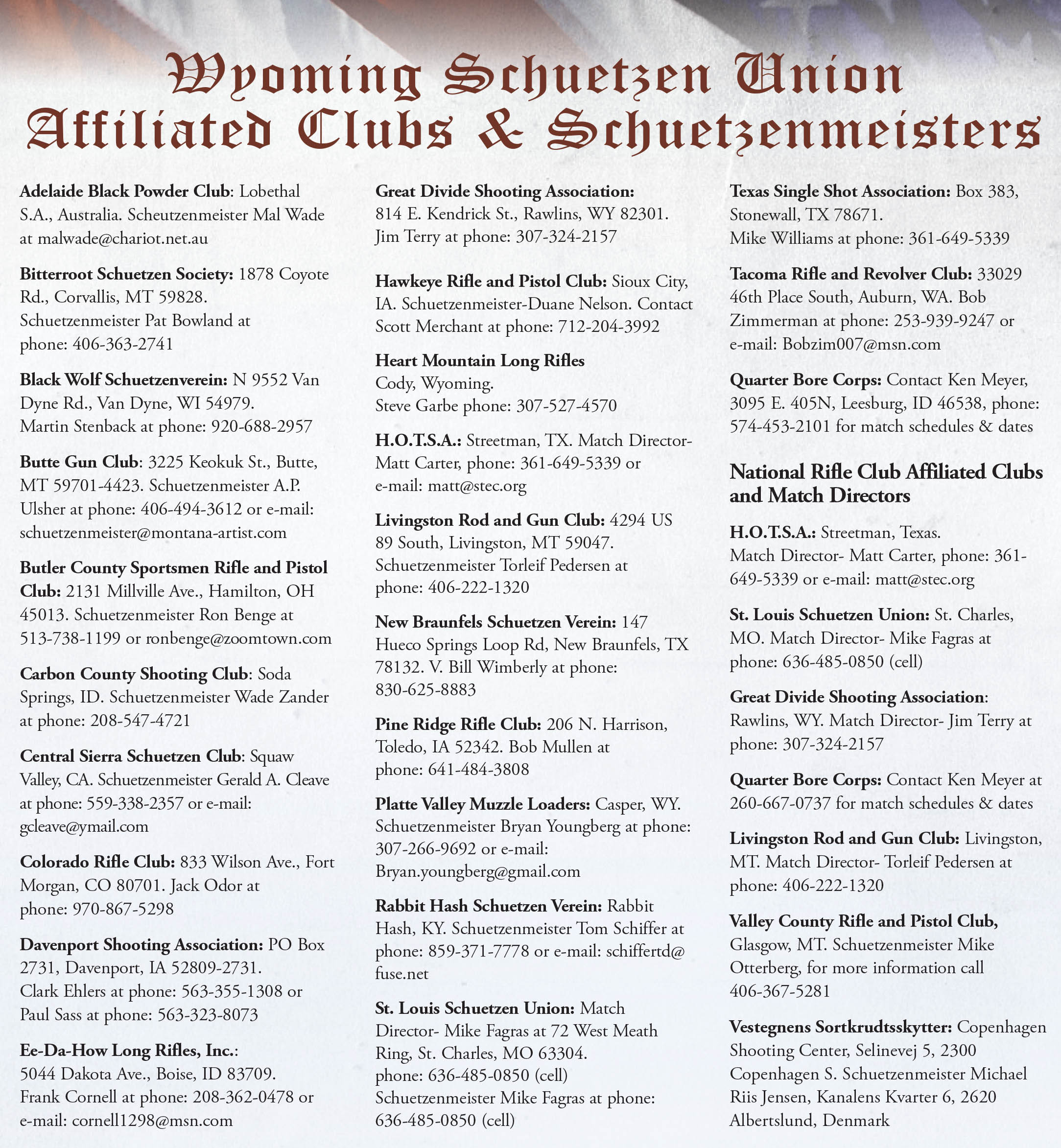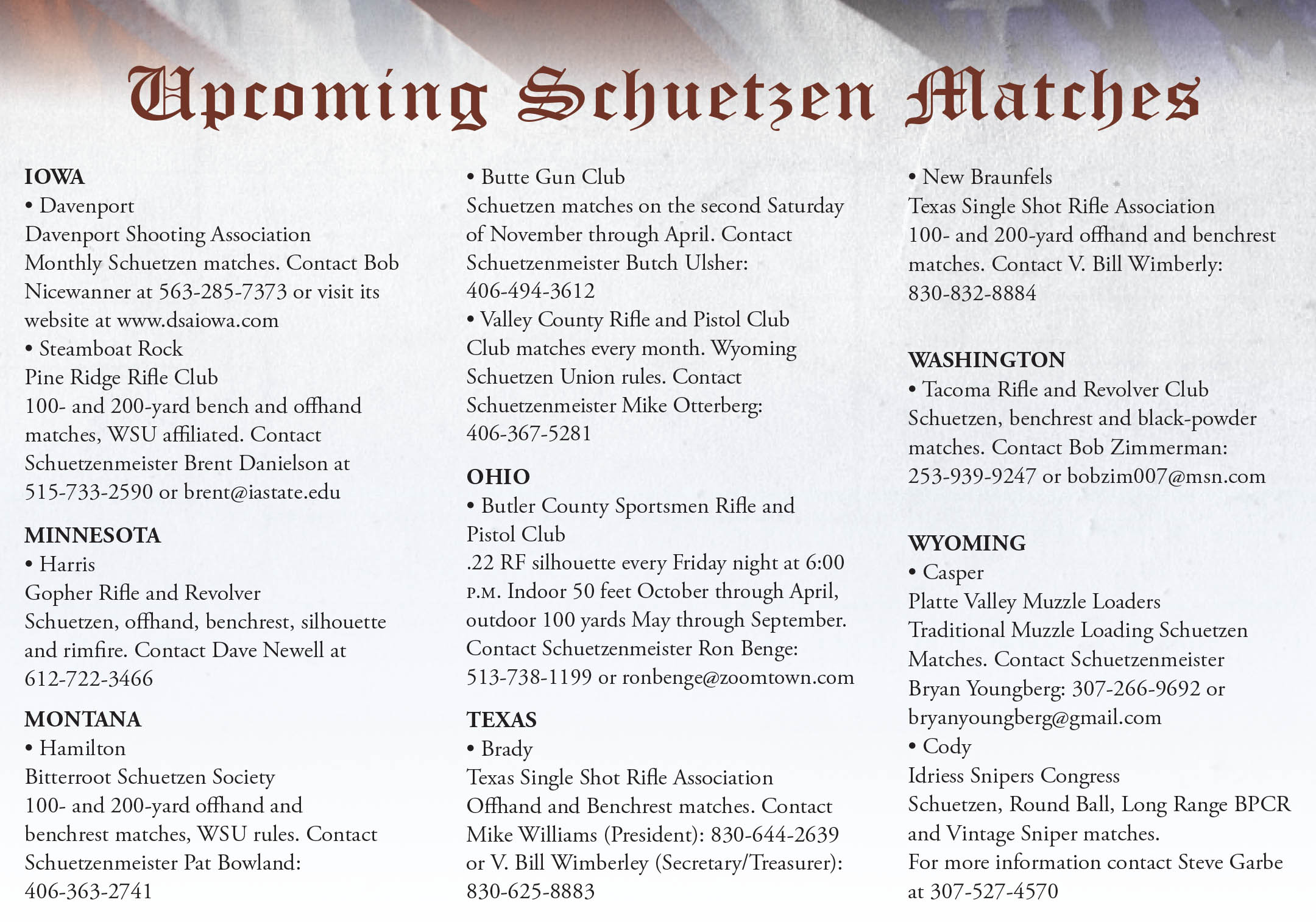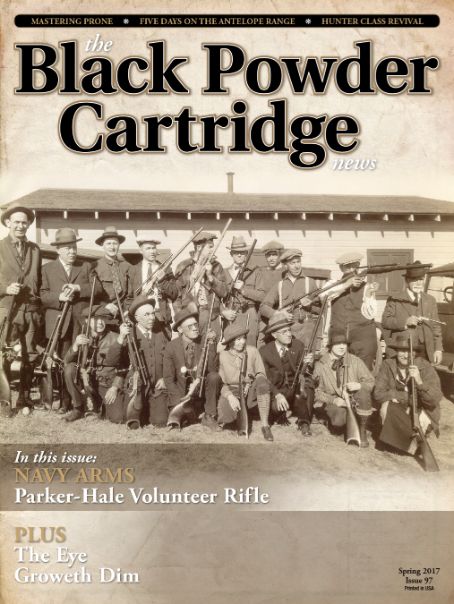The Wyoming Schuetzen Union's Center Shot
Death of an Old Sportsman and Rifle Maker
column By: Staff | April, 17
We have had noticeable interest in the old-time rifle clubs of Wyoming and Colorado here at the News, occasioned most likely by the interesting articles penned by Cody Smith. The Cheyenne Rifle Club and the Denver Rifle Club were two of the biggest in the area, and the rivalry between the two clubs was intense. As Cody has researched, Peter Bergersen was the “godfather” of the Cheyenne club. By any measure, Carlos Gove was the driving force behind the Denver Rifle Club, but I’m always surprised by how many modern-day, black-powder riflemen have no idea who he was. To remedy that shortcoming, in this installment of the “Center Shot” we have included the obituary of Mr. Gove as it was published in the July 26, 1900, issue of Shooting and Fishing magazine.
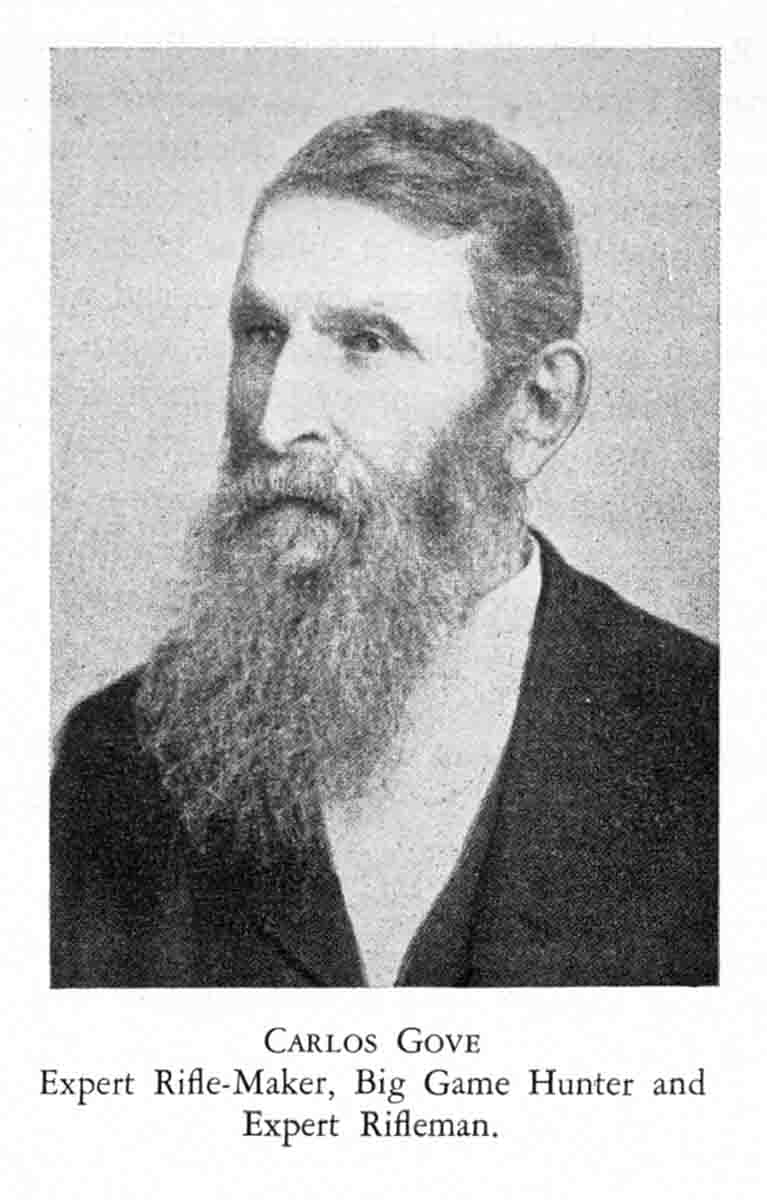
Carlos Gove, of Denver, has joined his old friends in their long camp on the happy hunting grounds. He passed away as he had lived – peacefully, quietly, surrounded by his relatives and friends. He was in his eighty-third year. He came of sturdy old revolutionary stock, and was hale and hearty until the last few years, when rheumatism had caused him much suffering at times, but it was not always the master, for there were days when he would shoulder his rifle or his gun and pass a few hours in the haunts he loved best. And at such times he was followed by another veteran of many hunting days and scenes – old Governor, fat, nearly blind, feeble but eager to the last for a day afield with his old master, as dogs that are properly trained generally are.
Mr. Gove was born in Wentworth, N.H., April 19, 1897. He devoted three years to learning the gunsmith trade and entered the First United States Cavalry when about twenty years of age, serving with it through the Seminole war in Florida. It has been said, but with how much truth it is impossible to say, that he was, at the time of his death, the oldest United States regular soldier. He was connected with the Indian department and the Great North American Fur Co. for a number of years, during which time he hunted and trapped on the great plains when the bison and the Indian were more numerous than cattle are today. He began a business career in St. Joseph, Mo., in 1847, and in 1854 removed to Council Bluffs, Iowa. In both of these towns he made and sold rifles, and if we mistake not he was also in the same business in St. Louis just prior to the civil war. His skill as a gunsmith and a maker of accurate rifle barrels was at one time known throughout the whole western country, but we believe his reputation as a maker of big guns was known to but a few. One of his favorite anecdotes was in connection with his manufacture of cannon for the federal government, and he was fond of telling of a pompous army officer who was detailed to test the Gove gun, and who reiterated his opinion of any civilian who could make a gun that would shoot.
After the great excitement occasioned throughout Colorado and the west by the finding of gold in the fickle sands of Cherry creek, the town of Denver grew rapidly, and soon it became apparent that it would be a coming center for supplies for a large section of the country. Mr. Gove was quick to realize this, and while other merchants hurried to the new town with stocks of dry goods and wet goods, he crossed the plains with an assortment of firearms that experience had taught him would sell readily to the hunters, trappers, and miners then hastening westward to grow up with the country. This was in 1860. He was engaged in the gun business there until in the eighties, when he retired. It is doubtful if any man sold more firearms than he did in that time, and many of those he disposed of were made by him. In this work he was aided by George Schoyen, who came from Chicago and entered Mr. Gove’s employ when quite young. Mr. Schoyen’s workmanship is of the very highest order, and while some of his skill came to him naturally from his Norwegian ancestors, much of it is, no doubt, due to the thorough and careful training he received at the hands of Mr. Gove. It is pleasant to record the fact that Mr. Gove’s ancestors were Americans, his grandfather having been a soldier in Washington’s army; so that it must be admitted that superfine workmen among the gunsmiths come from this as well as other countries.
Mr. Gove’s sole amusement was shooting. The rifle and rest shooting appealed most strongly to him, but he loved wild fowl shooting scarcely less, and passed many days in the pursuit of ducks and geese along the streams and lakes of Colorado. When long range shooting was in vogue he was a strong team member, and his skill at 200 yards offhand was high, but his best shooting was done at 200 or 220 yards rest with muzzleloading rifles. He shot and won many matches of this sort, using rifles of his own make as well as those turned out by Billinghurst, who was one of his firm friends until the latter died.
Mr. Gove was the first president and a life member of the Denver Rifle Club, hence it was meet that at his funeral the members in attendance should show the esteem in which they held him. Their offering was a full size 200-yard Standard target formed of roses and bearing the single word, Rest. At a special meeting the club passed resolutions of respect for their old friend.
Among the seven children that survive their father, one, Mrs. Belle Pitsipous, wife of the British consul to Shanghai, China, is now in London with her husband, who left his post on leave recently. Oliver, who inherited his father’s skill in shooting the rifle, is in Cape Nome, Alaska.
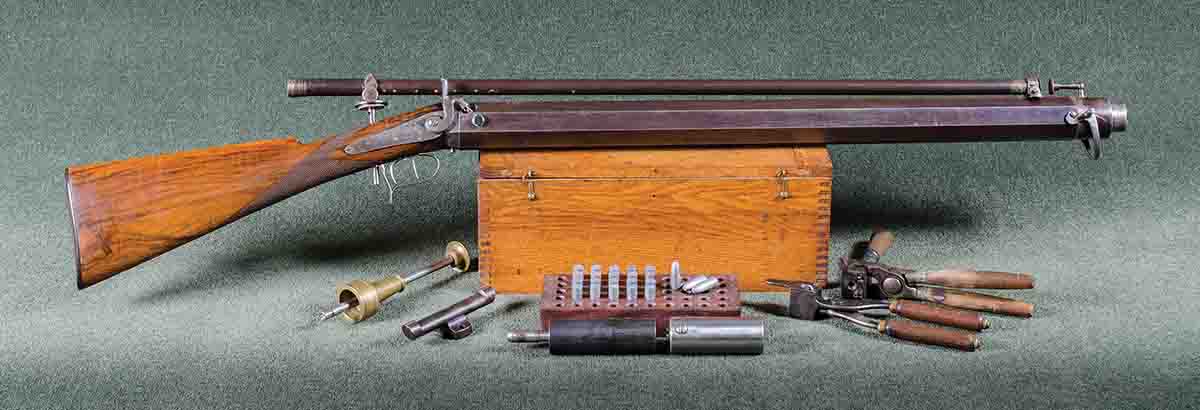
Ned Roberts, in his book The Muzzle Loading Cap Lock Rifle, reported this excerpt from an article on Gove in the Outdoor Life magazine of October 1933 which stated: “He was a thoroughbred when it came to sport, and thought no more of shooting a match for $100.00 or $500.00 a side than our later-day sportsmen do of going into a little sweepstakes event. In ’63 he shot a rifle match with M.L. Rood at 100 rods, a 10-shot string for $1000.00 a side, besides some good-sized side bets. Gove won easily.
“One day in ’73 a man walked into Gove’s store on Fifteenth Street and offered to bet $2,500 that he could beat Gove in a match at live birds, shooting at ten birds. Gove accepted the wager, the money was put up and the match shot, with the result that Gove won by the score of ten to seven. Mr. George Schoyen was a witness to this match.”
In our research of old shooters and shooting methods, it is always inspirational to read of the old-time riflemen and their exploits. Carlos Gove was one of the big “movers and shakers” in the western shooting world and very instrumental in promoting shooting competitions in Wyoming and Colorado. He was an expert rifleman and master gunsmith to be sure.
